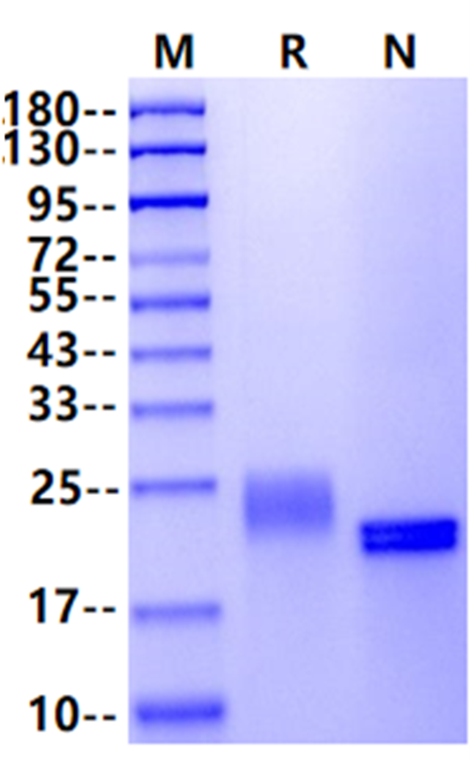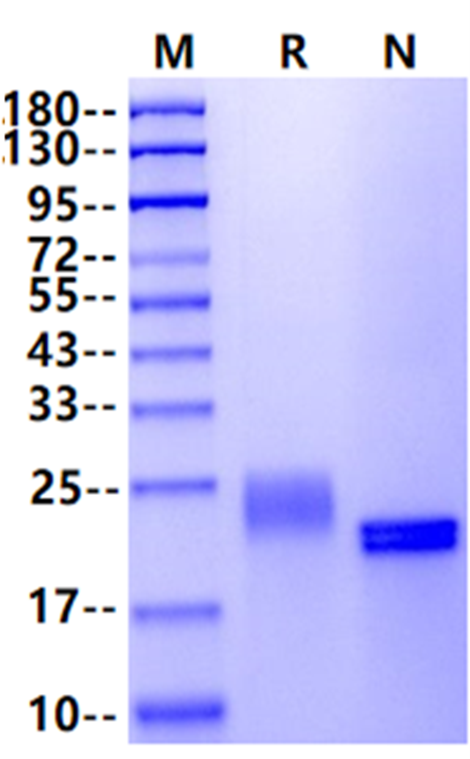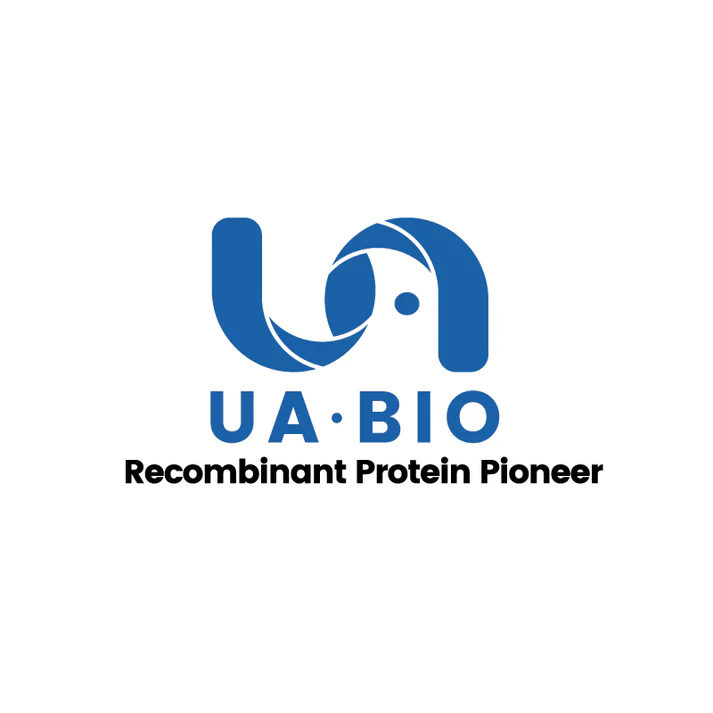1ug (R: reducing conditions, N: non-reducing conditions).
Product Details
Product Details
Product Specification
| Species | Mouse |
| Antigen | CLEC3B |
| Synonyms | Tna Protein |
| Accession | P43025 |
| Amino Acid Sequence | Glu22-Val202, with C-terminal 8*His ESPTPKAKKAANAKKDLVSSKMFEELKNRMDVLAQEVALLKEKQALQTVCLKGTKVNLKCLLAFTQPKTFHEASEDCISQGGTLGTPQSELENEALFEYARHSVGNDANIWLGLNDMAAEGAWVDMTGGLLAYKNWETEITTQPDGGKAENCAALSGAANGKWFDKRCRDQLPYICQFAIVGGGSHHHHHHHH |
| Expression System | HEK293 |
| Molecular Weight | 20-25kDa |
| Purity | >95% by SDS-PAGE |
| Endotoxin | <0.1EU/μg |
| Conjugation | Unconjugated |
| Tag | His Tag |
| Physical Appearance | Lyophilized Powder |
| Storage Buffer | PBS, pH7.4 |
| Reconstitution | Reconstitute at 0.1-1 mg/ml according to the size in ultrapure water after rapid centrifugation. |
| Stability & Storage | · 12 months from date of receipt, lyophilized powder stored at -20 to -80℃. · 3 months, -20 to -80℃ under sterile conditions after reconstitution. · 1 week, 2 to 8℃ under sterile conditions after reconstitution. · Please avoid repeated freeze-thaw cycles. |
| Reference | 1. Xie Xing Wei;Jiang Shan Shan;Li Xiang. CLEC3B as a Potential Prognostic Biomarker in Hepatocellular Carcinoma. [J] Frontiers in Molecular Biosciences,2021(7): 614034-614034. |
Background
Tetranectin (TN), also known as C-type lectin domain family 3, member B (CLEC3B) is a member of the C-type lectin Family.It is plasminogen kringle 4 binding protein and regulates fibrinolysis and proteolytic processes via binding to plasminogen. Tetranectin was found significantly under-expressed in both serum and saliva of metastatic oral squamous cell carcinoma (OSCC) compared to primary OSCC. Tetranectin is thought to enhance proteolytic processes enabling tumor cells to invade and metastasize.C-Type Lectin Domain Family 3 Member B (CLEC3B) encodes proteins associated with tumor invasion and metastasis. However, the interrelation between CLEC3B gene expression, tumor immunity, and prognosis of patients with hepatocellular carcinoma (HCC) is unclear. Tetranectin has been suggested to play a role in tissue remodeling, due to its ability to stimulate plasminogen activation and its expression in developing tissues such as developing bone and muscle.
Picture
Picture
SDS-PAGE


1ug (R: reducing conditions, N: non-reducing conditions).


